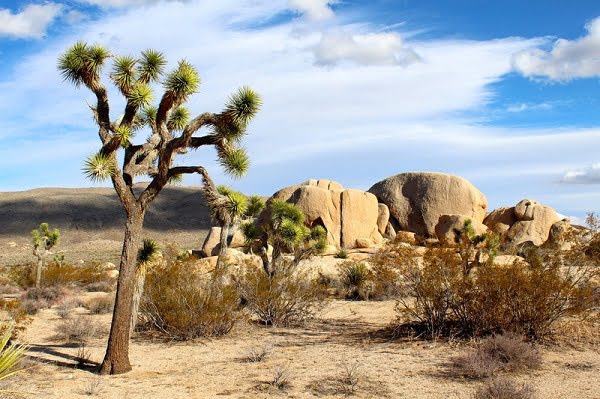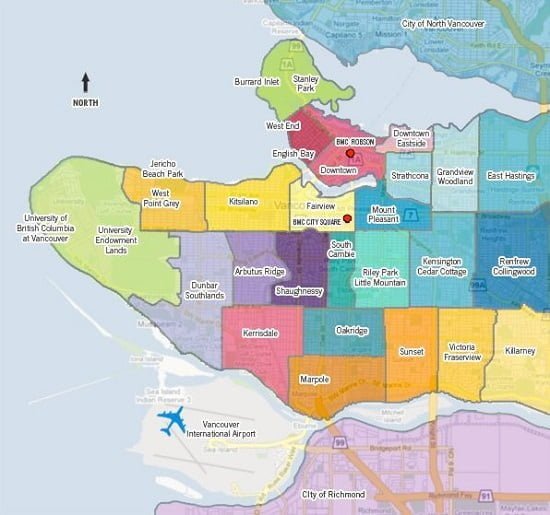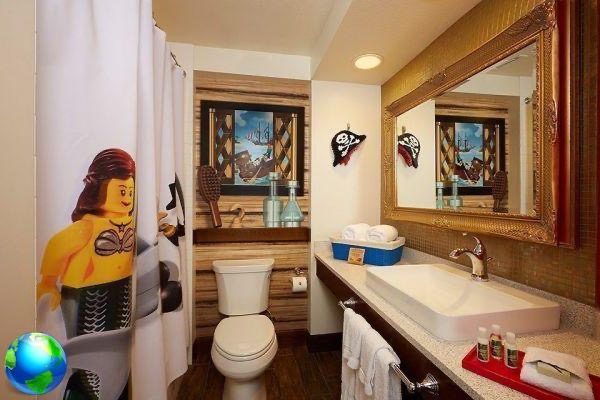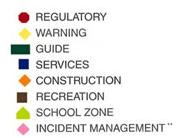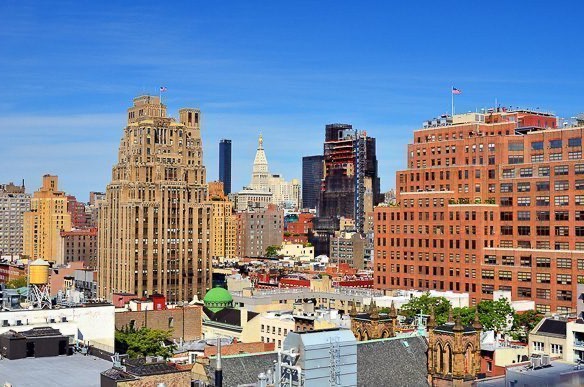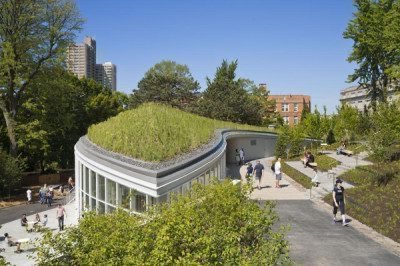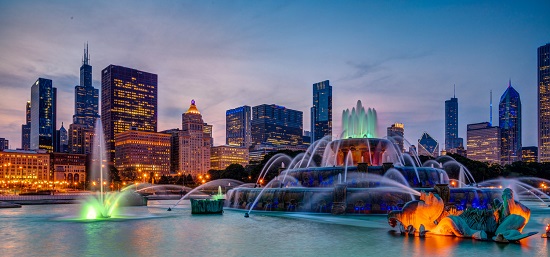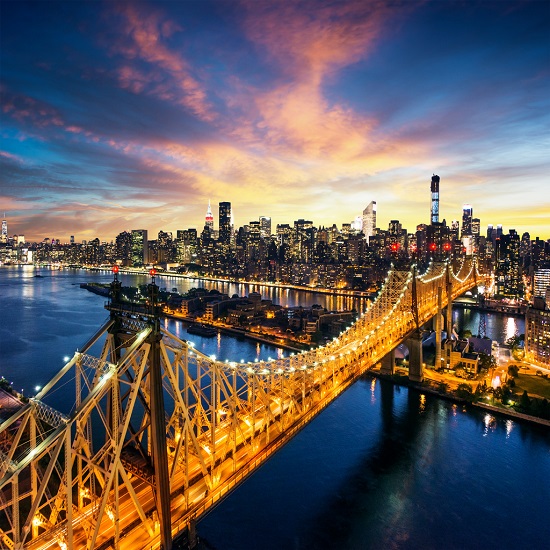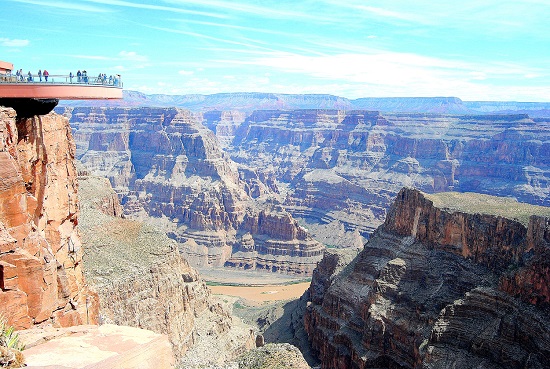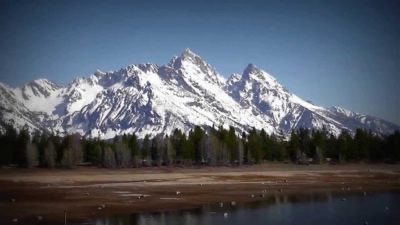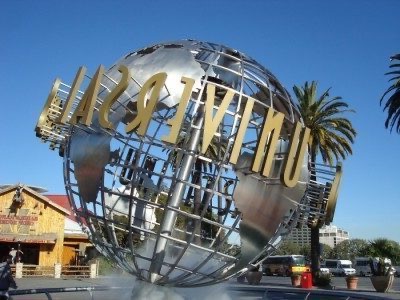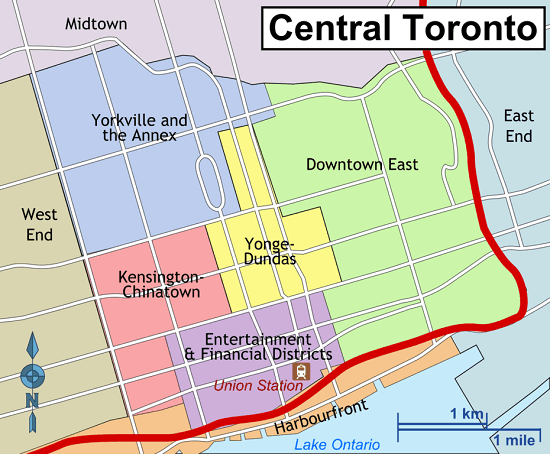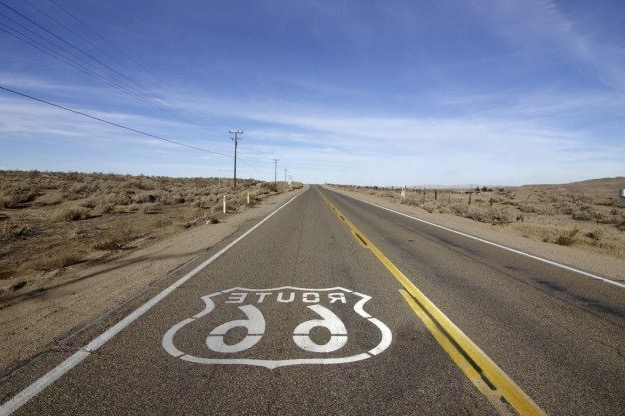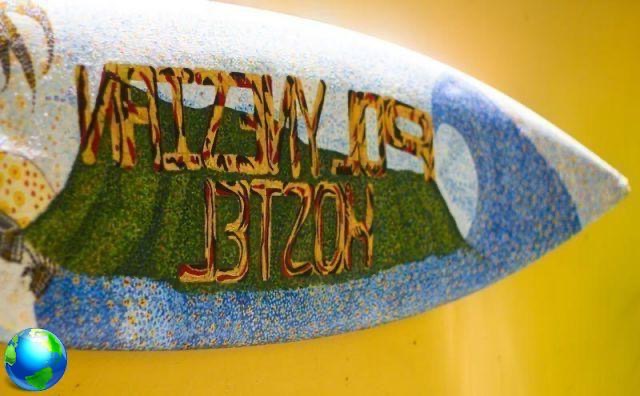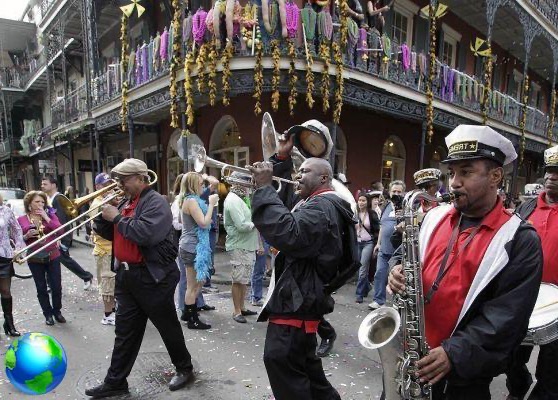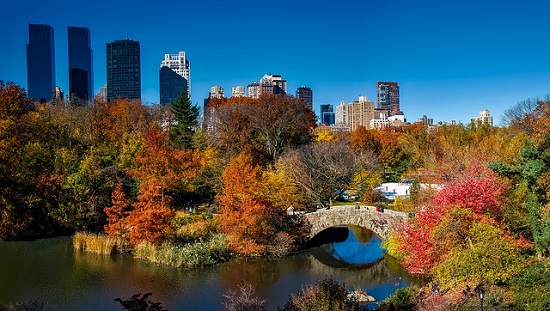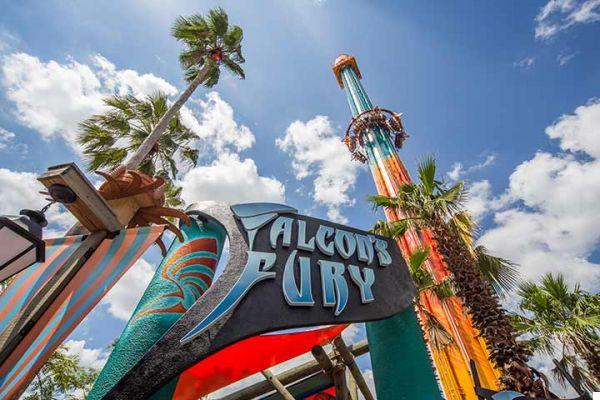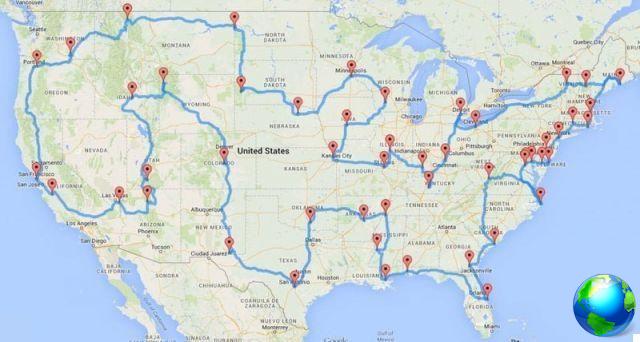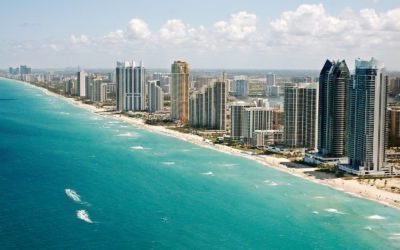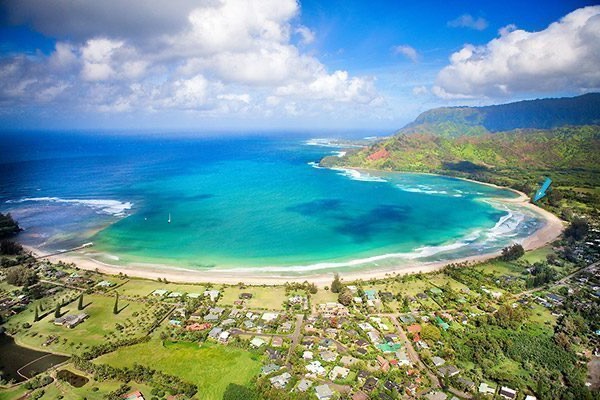The state of Arizona, also known as the Grand Canyon State, is the 6th largest and 15th most populous in the country and borders New Mexico, Utah, Nevada, California, and Mexico. Located in the southwestern United States, Arizona has some of the most stunning and unique terrain in the United States with its rocky canyons, rapids, cactus-dotted desert regions, and towering mountains.
Its spearhead, the Grand Canyon, is one of the most visited national attractions in the world. However, those who venture deeper into the Arizona territory will discover an impressive variety of unique sights and interesting sites.
Majestic landscapes, unforgettable views and fun activities, typical of the Far West, make Arizona a must on your trip to the United States. Its traditions, people and cities will make you feel part of the history of one of the states that most faithfully represent the American spirit. Check out the top attractions to see in Arizona below!
What to see in Arizona
Grand Canyon
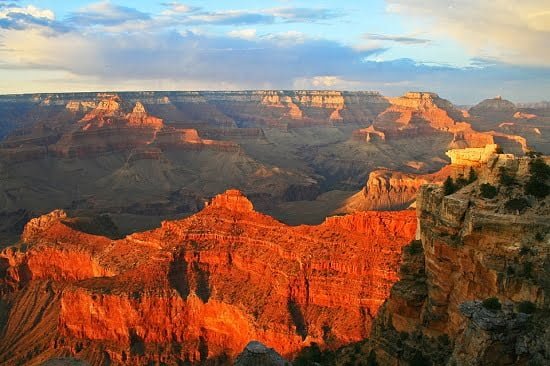
Renowned throughout the world, the Grand Canyon is the most famous national park in Arizona and the United States. This natural wonder carved by the Colorado River is a site of almost surreal beauty, with endless ridges of colorful cliff walls and deep ravines.
Most visitors see the canyon from South rim, where there are numerous viewpoints all along the way and walkways that run along the edge of the canyon. The North Rim offers a completely different view, but the road is closed in winter. For those who want a closer look, it is possible to hike the Grand Canyon or take a helicopter flight over and through the canyon.
Discover also:
Where to sleep to visit the Grand Canyon: best areas
Grand Canyon Skywalk: prices, times and how to get there
How to visit Monument Valley and Grand Canyon in one day
Monument Valley
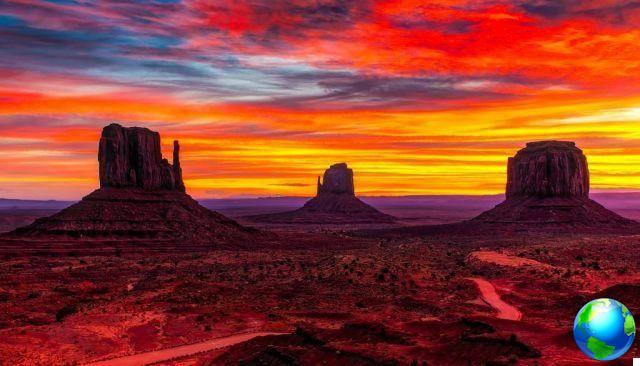
Monument Valley offers perhaps the most iconic images of the American West. This area, which straddles the Arizona-Utah border, includes jagged rock formations, stone spiers and hills and sand dunes that have been filmed and photographed countless times over the years for films, commercials, and holiday brochures. For this reason, the area can feel quite familiar, even on the first visit.
The valley is not a valley in the conventional sense, but rather a broad flat, sometimes desolate landscape interrupted by spectacular formations that rise hundreds of feet into the air, the last remnants of the sandstone layers that once covered the entire region. .
In the heart of the valley is Monument Valley Navajo Tribal Park, where you'll find an impressive visitor center and a 17-mile drive along a one-way gravel road through the park. You can also do a guided tour to explore the area in more depth.
Glen Canyon National Recreation Area
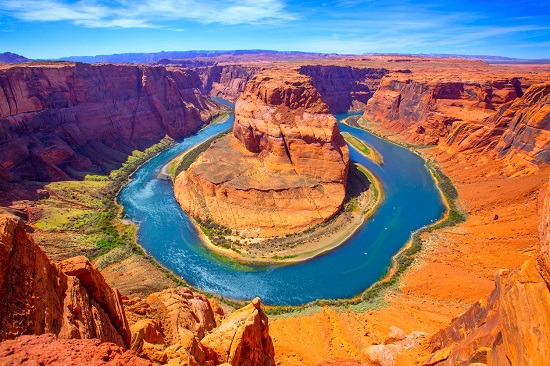
The national recreation area of Glen Canyon home to Lake Powell and the Glen Canyon Dam. Lake Powell is the second largest man-made lake in the United States and arguably the most scenic, stretching 186 miles across the red rock desert from Page, Arizona to Hite, Utah.
It began to fill up in 1963 following the completion of a dam on the Colorado River near the southern end of Glen Canyon, and was not completely full until 1980.
What makes the lake so memorable is the contrast between the deep blue waters and the surrounding landscape: red sandstone rocks with little or no vegetation, the countless steep side canyons and the spiers, ridges and hills that once stood high above Colorado, and which are now semi-submerged like small islands.
Lake Powell has become an important center for many recreational activities, but hiking is one of the main reasons to visit the area. Not to be missed Horseshoe Bend, a deeply entrenched meander of the Colorado River and one of the most photographed spots in Arizona.
Petrified forest national park
One of the largest concentrations of petrified trees in the world is found in the Petrified Forest National Park, a desert area containing plant and animal fossils and archaeological sites in eastern Arizona, approximately 110 miles east of Flagstaff and 210 miles west of Albuquerque. , in New Mexico.
Scientific studies show that the petrified trees found in the park date back to 211-218 million years ago. Noteworthy is the Black Forest Bed in the northern part of the park.
In addition to the fossil trunks in the park you can also see some animal fossils, including those of dinosaurs and phytosaurs that date back to the Triassic period (252 to 201 million years ago), petroglyphs (e.g. Newspaper Rock) and the ruins of ancient ancestral peoples.
Other attractions include the Painted Desert Inn National Historic Landmark near the north entrance and the Rainbow Forest Museum near the south entrance.
Saguaro National Park
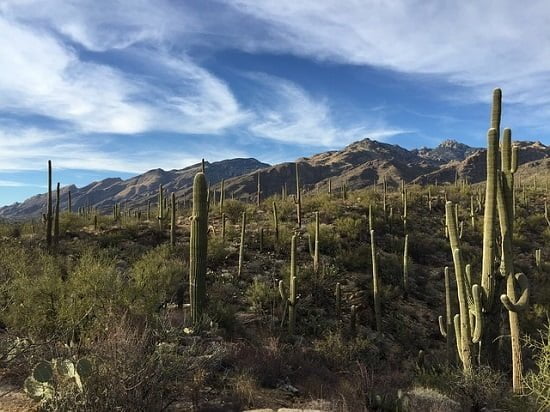
Saguaro National Park is known and visited for the Saguaro cactus (Carnegiea Gigantea) which is the symbol of the state of Arizona and appears on all car license plates. It is the largest and one of the slowest growing of all cacti. It reaches up to 15 meters in height and lives for several centuries. Plants can weigh up to 8 tons, partly due to the large amount of water the stems can hold.
The park, in addition to the ever-present saguaro, also preserves a large variety of other cacti, desert plants, and many interesting wildlife, although most are only active during the night.
Saguaro National Park is divided into two distinct areas, one about 32 miles east of Tucson and the other about 24 miles west of the city center. There are two visitor centers, one in each area, and both are easily accessible by car, but there is no public transportation in the park. There are amazing trails to go like the strait, rocky and steep Green Ridge Tank in the eastern area, offering spectacular views of the Tucson Basin and the King Canyon Trail in the western area leading to the top of the Wasson Peak, the highest peak in the park.
Antelope Canyon
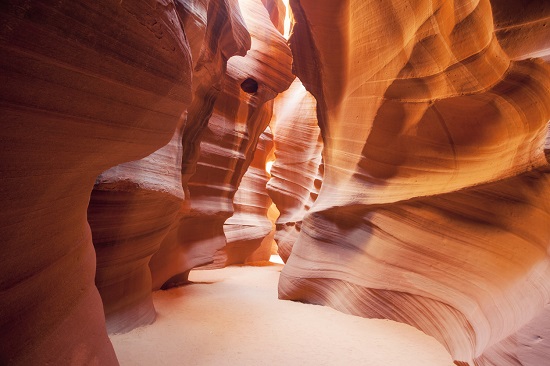
Located ten kilometers from the city of Page, Antelope Canyon it is a true natural jewel. The canyon is the product of millions of years of water erosion and its extraordinary and mysterious beauty attracts many nature lovers. At nearly 200 meters in length, the canyon walls climb nearly 37 meters above the stream bed, making it a swirling sandstone cathedral in fabulous red colors.
Phoenix
The fifth largest city in the United States, Phoenix enjoys a particularly mild winter climate. Its shopping malls and wide boulevards offer a good overview of what major American cities are like.
Do not miss a visit to the Heard Museum to better understand the history of the American Indians. The city of the sun is a must-see on a trip west by motorbike or car.
The Wave
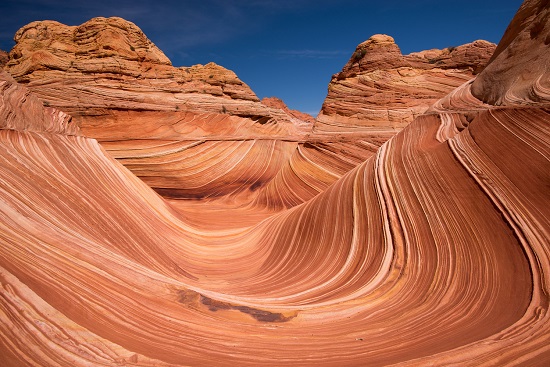
The Wave is located on the border between Utah and Arizona, halfway between Page (Arizona) and Kanab (Utah), in the Paria Canyon / Vermilion Cliffs Wilderness. It is a splendid red sandstone formation known throughout the world for its strange shape, that of a rocky wave, formed by erosion.
Due to the site's tremendous popularity, the Land Management Office limits foot traffic to 20 people per day. That's right: only 20 people can access the site at a time, thus preserving the integrity and beauty of The Wave. A place that is difficult to access but worth it.
Find more information on tickets for the site
sedona
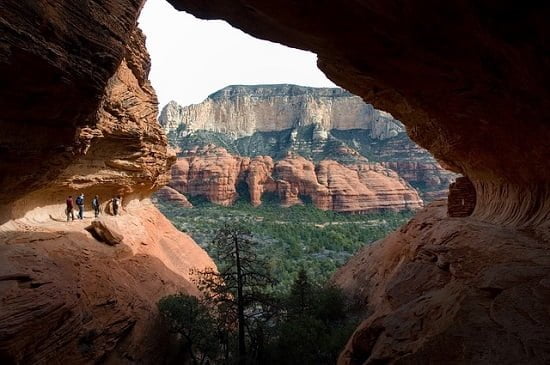
The two main routes south of Flagstaff are Highway 17 to Phoenix and the slower, and much more scenic AZ 89A, which runs through dense pine forests for 10 miles before suddenly and spectacularly descending intoOak Creek Canyon, a steep, narrow and very colorful gorge that is one of the most visited areas in Arizona.
This formidable canyon with orange-red rocks attracts many lovers of the outdoors and photography. The city of Sedona is located at the southern end of the canyon, where the cliffs open, and is a perfect base for exploring the surrounding lands, which include many other canyons and a vast and scenic red rock desert in all directions.
Meteor crater
Among the flat, sandy, and arid grasslands that characterize the countryside east of Flagstaff, is one of the largest and arguably best-preserved meteoric craters in the world, Meteor Crater. It is located 6 miles south of I-40, halfway between Winslow and Winona.
This huge depression, nearly 5 kilometers in circumference and 160 meters deep, was created 49.000 years ago by a meteor impact and its proximity to the interstate makes it easily accessible.
Canyon de Chelly National Monument
This canyon is relatively little known. Its main attraction is the spectacular Native American cave dwellings set along steep canyons, with walls up to 300 meters high. These are centuries-old settlements of the ancient Anasazi built between 350 and 1300 AD and set in the niches below the cliffs.
White House Ruins is the best known of the more than XNUMX cliff dwellings. Other cave dwellings include the Antelope House and the Mummy Cave in the Muerto Canyon.
The protected natural area of about 340 square kilometers located in Northeast Arizona, also offers a fascinating insight into the current life of the Navajo, who still live there and cultivate the valley floor.
Hoover Dam
Hoover Dam o la Hoover Dam it is one of the great engineering wonders of the world. This massive structure, completed in 1935, crosses the Colorado River, connecting Arizona and Nevada. It is 221 meters high and 380 meters long. At the time of its completion it was the largest hydroelectric power plant in the United States.
Lake Mead, held back by the Hoover Dam, is the largest man-made lake in the United States and holds the equivalent of two years of Colorado River flow.
Visitors can cross the dam for free on foot or by car, although there is a charge for parking. Another option is to take a tour of the Hoover Dam or the Powerplant.
Best time to visit Arizona
Without doubt the best time to visit Arizona's desert regions is in winter. The period of high season for hard trips and vacations in Arizona from November to March, at least for the Phoenix and Tucson areas, when temperatures are warm but not hot.
However it can get cold in winter for destinations such as the Grand Canyon, Sedona and Flagstaff, which are located at higher altitudes, in fact it can happen to find snow. Spring and autumn are the best times to visit the whole of Arizona, with temperatures everywhere mild. In spring you have the chance to see desert flowers bloom and white flowers on saguaro cacti.





